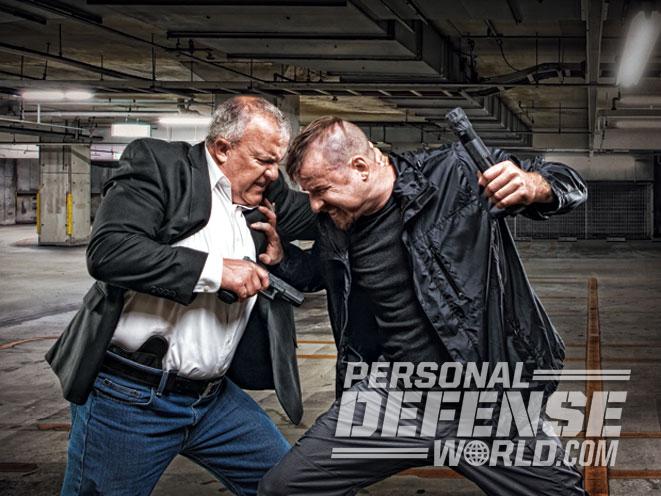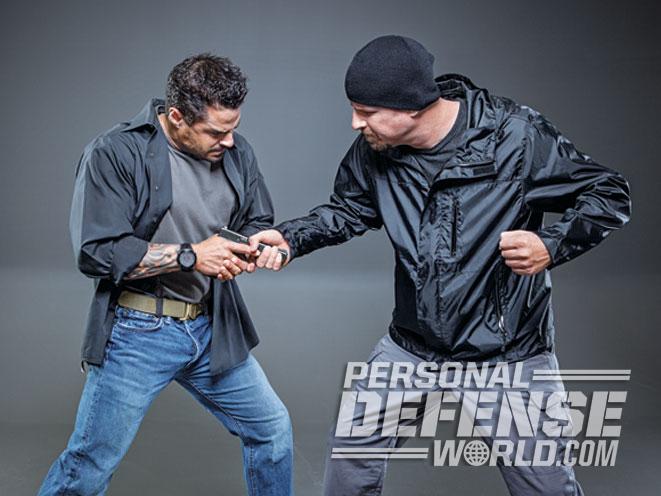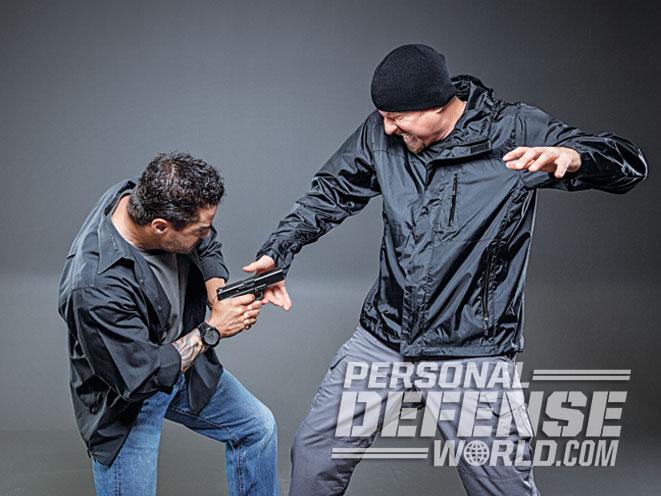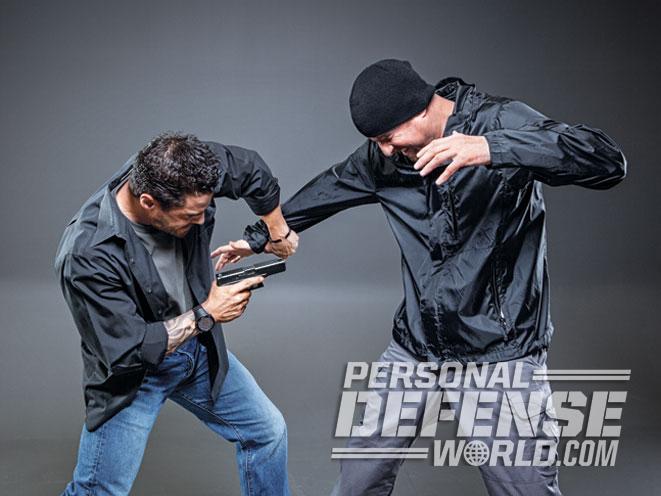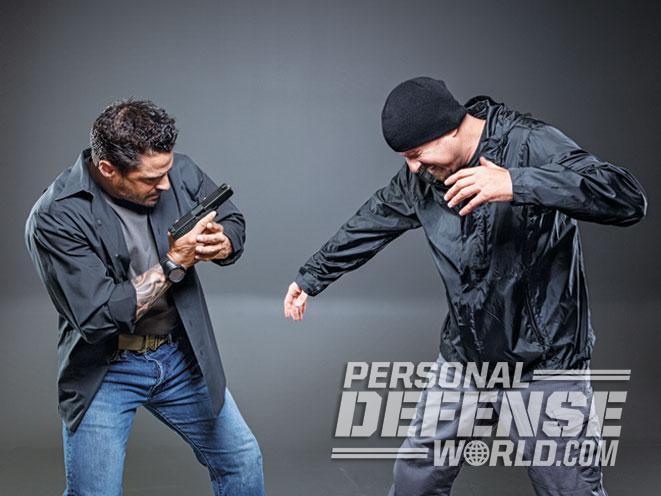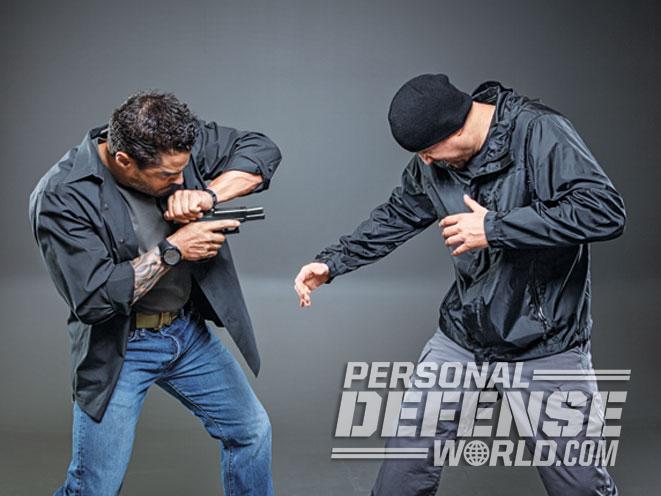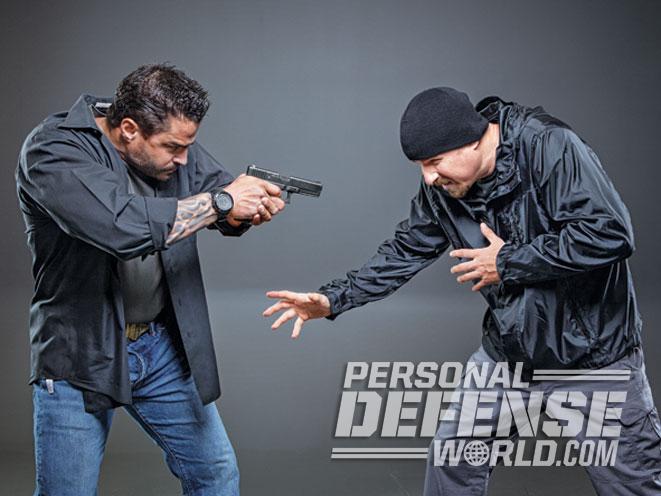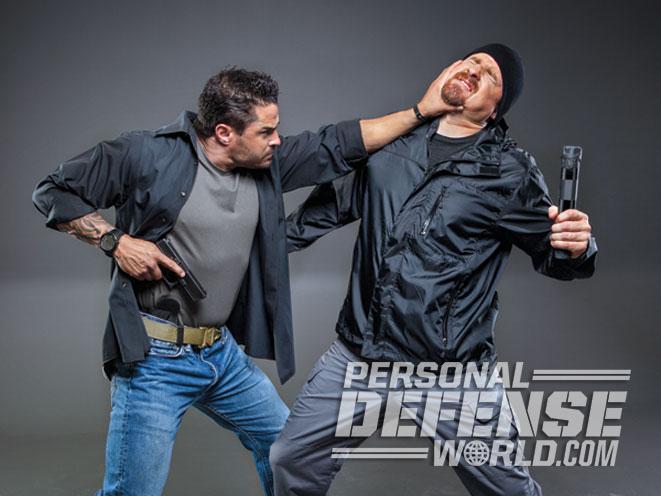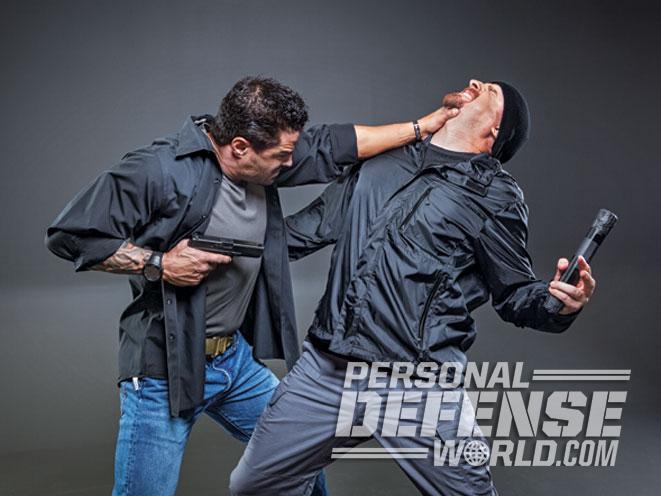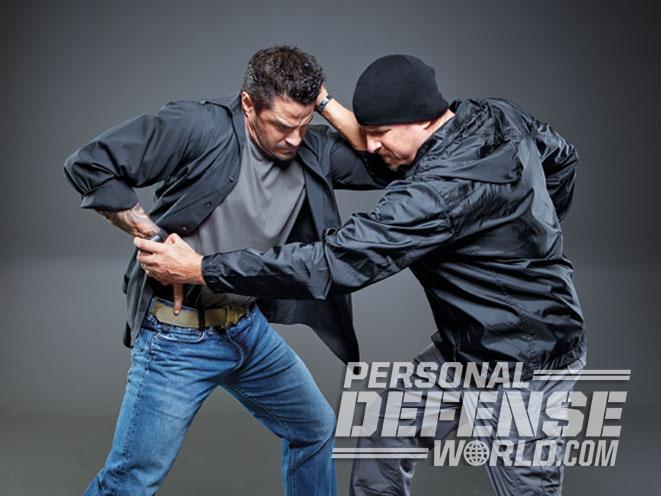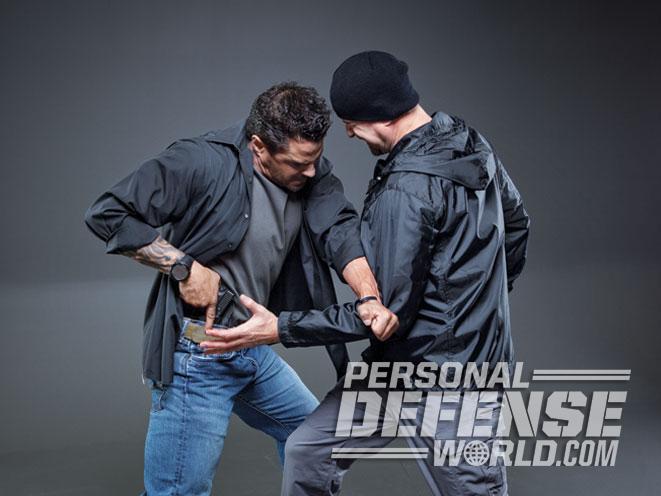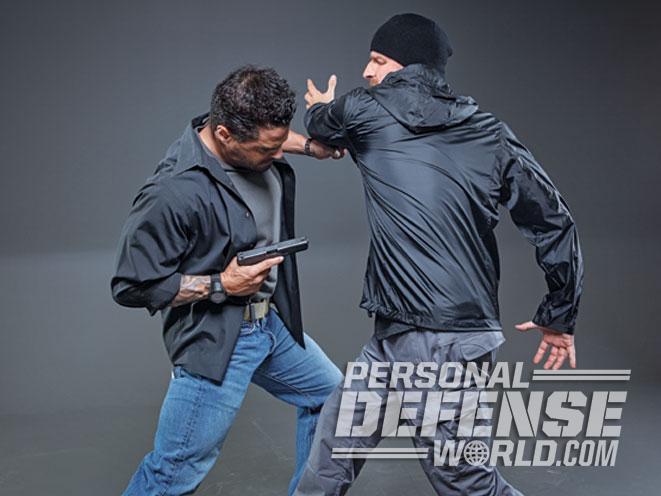According to data from the FBI’s 2012 “Law Enforcement Officers Killed and Assaulted” report, 24 of the 44 officers killed with firearms in 2012 were between 0 and 5 feet from the offender when shot. These numbers are referenced because very little reliable data exists for the civilian sector. What we need to take from this is pretty straightforward: If bad things are going to happen, they usually happen in tight, close-quarters situations.
With a growing trend of people carrying concealed weapons for personal protection, a point should be made about the necessity of close-quarter skills. Handgun training is an ongoing evolution of skills and tactics. If you carry for personal protection, however, it is important to evaluate your “training path” to make sure it coincides with your requirements. While slow fire on steel at 50 yards can be enjoyable, it has little to do with defending yourself at 3 feet.
The scenarios that will drive you to present your weapon will be fast paced and hyper violent. The fundamentals of working in this space are two-fold: mindset and technique. Your mindset in any life-or-death encounter should be one of aggression. Anything less than total commitment to stopping an adversary can have lethal consequences. You must turn the tables and quickly become the aggressor. While numerous volumes have been written about the psychology of personal defense, the one thing to remember is that extreme violence brought against an attacker is the best way to stop that enemy.
Advertisement — Continue Reading Below
Fighting Back
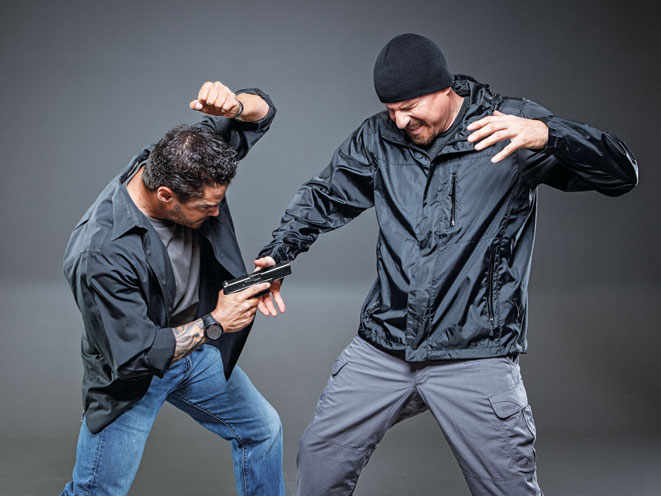
Handgun shooting is a complicated and perishable skill. Intensify the intent of your training with close-quarters defensive applications and the need for a plan arises quickly. These are the fundamental skills that every serious shooter should train on regularly.
Advertisement — Continue Reading Below
Fast Draw From Concealment: Skip the cliché of “slow is smooth.” Get your gun into the fight as quickly as possible. Make it a habit to always present your weapon crisply and with intent. The more you do it in training, the more of a habit it will become.
RELATED STORY: Massad Ayoob – Understanding Stand Your Ground & Castle Doctrine
Strong-Hand Shooting: If you are forced to engage in close quarters, there is a high probability that there will not be enough time to get your standard two-hand grip. Add to this the need to be able to fire accurately without having your weapon completely extended from your body. Being able to shoot accurately without seeing your front sights is not a magical skill. It takes plenty of instruction, time and practice.
Advertisement — Continue Reading Below
Trigger Control: The idea that you won’t miss in close quarters is a fantasy. Methodical and proper trigger control is essential in all shooting. Additionally, you must be keenly aware of where your trigger finger is in the event the conflict becomes physical after your gun is drawn. Shooting yourself during a struggle for your handgun can be a real threat.
Combative Skills: If an assailant is in physical contact with you, there may be a need to fight them off before you get to your weapon. One of the most dangerous things a gun owner can believe is that they are safe just because they carry a gun. You must be able to not only retain your weapon, but also effectively strike an adversary with your support hand at the same time.
Takedown Training
Advertisement — Continue Reading Below
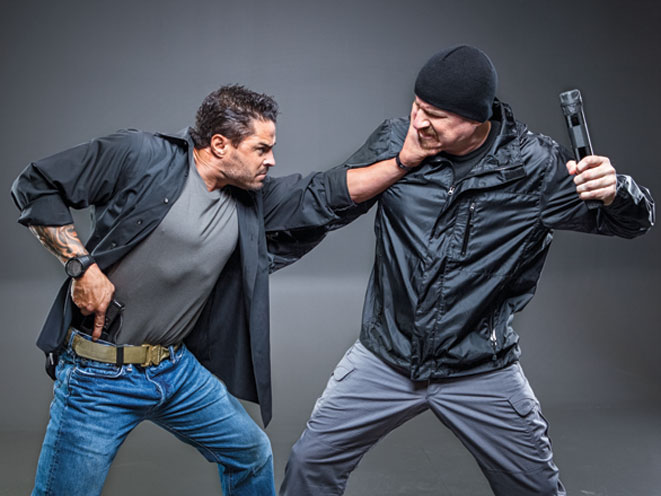
War gaming is an age-old process used by the military to train for possible scenarios. While these scenarios can never cover every possibility, they are good training tools. As a shooter training for close-quarters defense, there are certain drills you can do as well. All of these drills will assume that the adversary has become a dangerous enough threat to warrant the use of a firearm.
Too Close For Comfort: As the adversary closes the distance to you, strike out to the face with your support-side hand. The eyes or nose are good targets. Simultaneously draw your weapon and fire center mass from the close-quarters position. This technique resembles a well-known technique called “Speed Rock.” The difference is that we will not be rocking back. It is essential that you maintain your balance, and rocking back can be a challenge in that area. Once you have fired your weapon, do your best to break contact and move away from the attacker.
Advertisement — Continue Reading Below
The following actions will be the same in all of our close-quarters drills. First is to fire again if the assailant continues to advance. This is called follow through. Secondly, we scan for additional threats after the bad guy is down. It is important to physically turn your head because of tunnel vision. This skill we label as scanning. The third constant is to verify your weapon is ready to fight again if necessary. Make certain the weapon is in battery with a full magazine. This may require the execution of a tactical or even emergency reload. This final skill we label as evaluating.
RELATED STORY: 4 Shocking & True ‘It Happened To Me’ Self-Defense Stories
Get A Grip: In this scenario, the assailant is in physical contact with you and impeding your ability to draw. With your support-side hand, strike down onto the forearm of the assailant and clear your weapon. As you strike the arm, sweep it slightly across your mid line thus turning the person slightly away from you. Draw your weapon and fire center mass into their side and/or back depending on how far they turn. Break contact, follow through, scan and evaluate.
Advertisement — Continue Reading Below
Too Many Hands: This drill is based around the scenario that your weapon has been presented, but the adversary has their hands on it and is trying to drive it away. Our goal will be to minimize their movement and allow us to fire effectively. With your support-side hand, hook the head of the assailant and draw it close to you. This will begin to break their balance. Slightly bend your knees and use your entire body as a tool to bring the weapon to bear. Once the weapon is properly aligned, fire a shot.
If the aggressor’s hands are on the slide, there is a high probability that the weapon will not cycle. However, the depositing of at least one round center mass will assist you in gaining the upper hand. Once you fire, strike down on the side of the assailant’s neck as you snatch your weapon back. Break contact and move back. Execute a “tap-rack” to reload the weapon and bring it back into action. After that we follow through, scan and evaluate the situation.
These are but three of hundreds of drills available for practicing close-quarters fighting. Shooting in this realm must be done under professional guidance and in safe locations. The fruits of your labor, however, will be an ability to deal with the realities of personal defense.
Advertisement — Continue Reading Below
